Bicycle Cranksets and Chainrings: Round and Around We Go!
Table of Contents
The crankset is the part of the drivetrain that holds the crankarms (which hold the pedals), the chainrings, and which connects onto the bottom bracket. The bottom bracket slides into the bottom bracket shell, which is part of the bicycle frame.
Before diving in, I want to clarify some terminology:
- The term crankset is often interchanged with chainset.
- Chainrings are also referred to as sprockets or chainwheels.
- Crankarms are also be called cranks.
Types of Cranksets
Single Crankset/Chainring
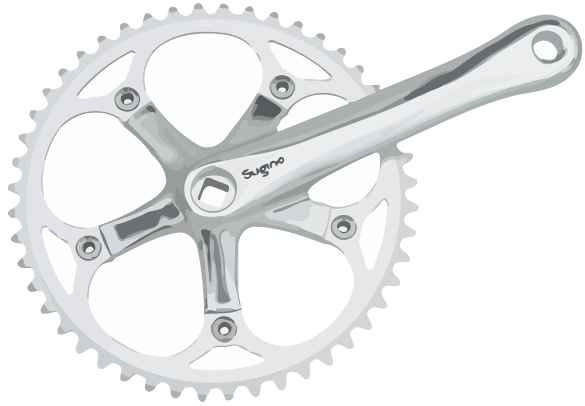 Single Chainring
Single ChainringYou can't get simpler than a single a crankset, which simply means only one chainring at the front. With only one chainring, there's no need for a front derailleur. You will see single chainring cranksets on single-gear bikes or on city bikes. City bikes, however, will have rear gears the combination of which is sufficient for the type of riding they're used for.
Double Crankset/Chainring
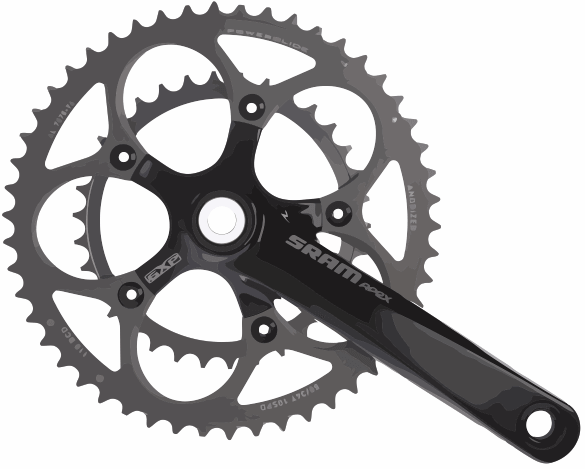 Double Cassette Chainset
Double Cassette ChainsetNext up is a double crankset, or double chainring. You will find this type of system on some hybrids, city bikes, and new road bikes. The number of teeth on the two rings will usually be around 53/39. Manufacturers claim that you can get the same number of gear ranges with this as you can with a triple crankset (below). However, some critics claim that it is not as efficient and the main reason manufacturers went to this system is cost savings which, of course, aren't usually passed on to consumers. If you do a lot of steep climbs then a double might not suffice. Although doubles are most often found on road bikes, it is also possible to see a double on mountain bikes, but the teeth number will be lower.
Compact Double Crankset/Chainring
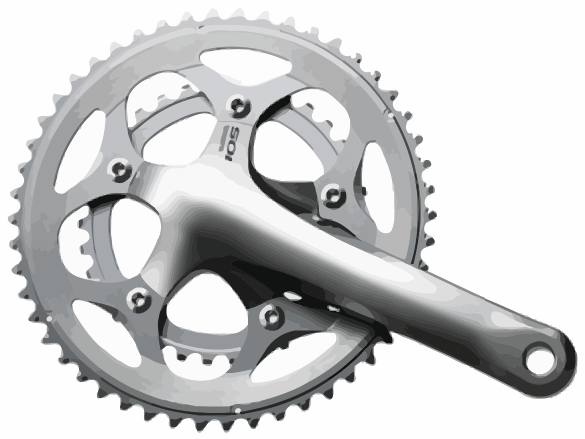 Compact Double Cassette Chainset
Compact Double Cassette ChainsetSimilar to the above, but the chainring sizes will be around 50/36 or 50/34. So you get some easier gears, but you give up a bit of high gear capability. For the average road rider this should do just fine. However, if you do a lot of climbing a 34 might not be an easy enough gear depending on the size of the rear sprockets and on your abilities.
Triple Crankset/Chainring
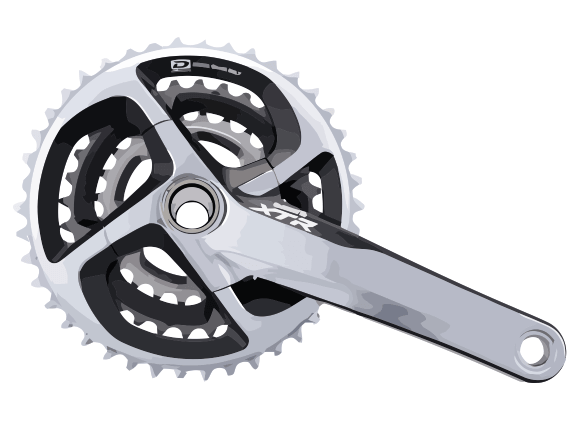 Triple Cassette
Triple CassetteFinally, you have three chainrings. You will find this kind of system on older style road bikes, cyclocross bikes, mountain bikes, hybrids, and tandems. On road bikes a triple chainring will usually be 52/39/30. On mountain bikes these numbers will be smaller e.g. 42/32/24 in order to have lower gears for climbing off road.
Incompatibility Between Cranksets
The major issue with all of these is converting from one to another. For example, let's say you purchase a bike with a double and then you decide you want to change it to a triple. You would need to buy a new crankset, a new front derailleur, and a new front derailleur gear lever. Depending on the quality you want this could easily run you $500. So, before you buy think carefully about what your needs are.
Construction Materials
Cranksets can be made of steel, aluminum, carbon fiber, titanium, or a combination of these. Often these materials are put through an extra process to improve some aspect. For example, aluminum can be forged to give it extra strength. Shimano has a model called Hollowtech which is made with a steel insert that is then removed resulting in a hollow core which reduces the weight. Cranksets can be one piece or multiple pieces. Sometimes different parts may be made of different material depending on whether strength is needed versus lightness.
 Worn out teeth on a chainring
Worn out teeth on a chainringHowever much riding you do, be sure to regularly check your chainrings for wear and tear or for chipped teeth. If the teeth have become sharp or excessively curved, such as in the picture to the right, then it's time to replace them. It is also a good idea to replace the chain at the same time and to also check the rear sprockets for wear and tear. In fact, a worn out chain will be the main culprit behind worn out chainrings. The chain should be checked for wear every few hundred kilometers, as it's much cheaper to replace the chain than the entire drive train.
On good quality chainrings you will find small adaptations that assist the gearing mechanism. They assist the chain to move into place quicker and smoother. With this Shimano chainrings (see below), these adaptations are called gates and pins.
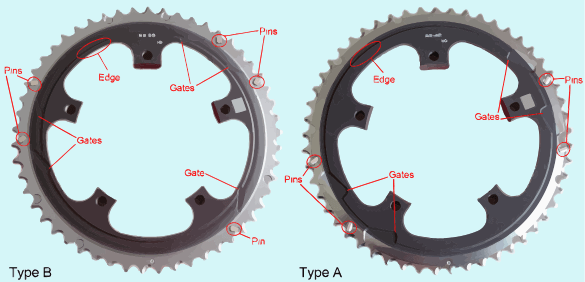
Measuring Chainring Size
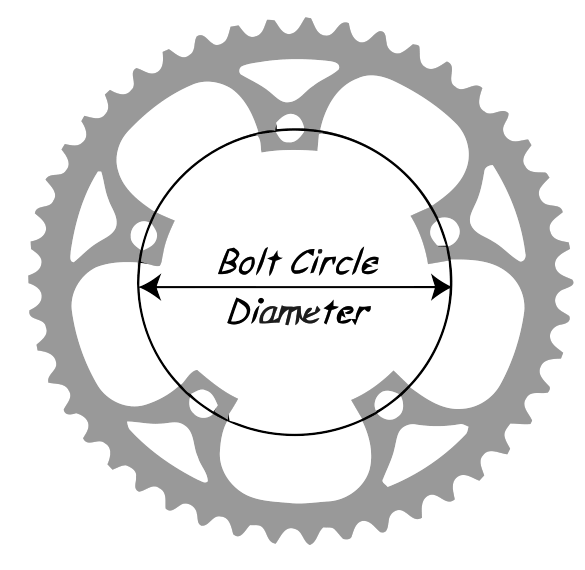
If you want to replace a chainring you will need to know the exact size of the existing one. Don't assume anything because there are many variations available even from the same manufacturer. And don't try to judge visually either, you will probably make a mistake. What you are looking for is the Bolt Circle Diameter (BCD). Sometimes this is printed right on the chainring so you won't have to measure anything. If it is not printed then you will obviously need to measure.
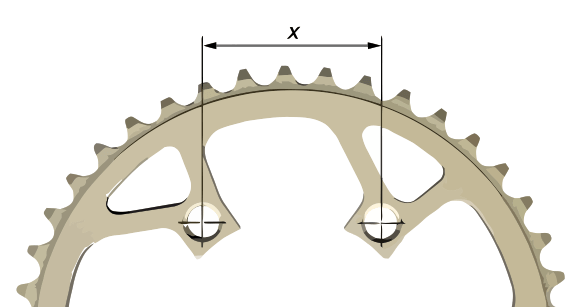 x marks what you measure
x marks what you measure You will need a ruler or a measuring gauge. It is best to remove the chainring. Then, pick any two adjacent bolt circles and measure the distance between them. To do this you should measure either from the centre of both holes; from the far most left edges of both holes; or from the far most right edges of both holes. Be as accurate as you can and record this measurement in millimeters. Using this measurement you can then calculate the BCD (the size of the chainring) with simple multiplication:
- If the chainring has 5 holes, multiply the centre to centre distance that you recorded by 1.701, this will give you the BCD.
- If your chainring has 4 holes, multiply by 1.414.
- For a 3 bolt chainring, multiply by 1.155.
Example: For a 5 hole chainring with centre to centre distance of 70mm would yield a 119.07 BCD (70 x 1.701).
You can find more info at Harris Cyclery.
Warning: There are some high end chainrings that are not uniform all the way around. If you want to check for this, measure the distance between all 2 adjacent bolts to make sure they are all the same. If they are not all the same then you can't use this method and it's best to consult the manufacturer for more information.



Leave a Reply